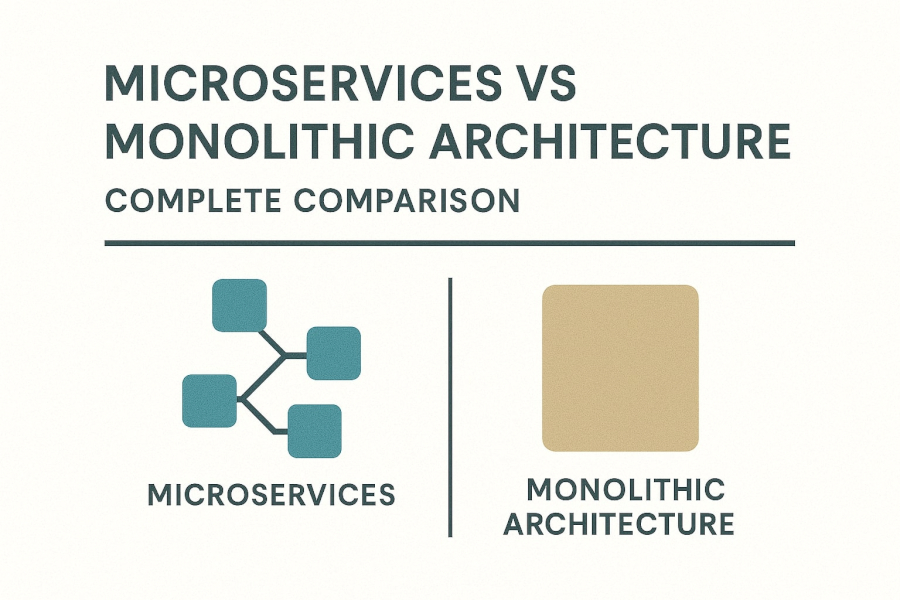Microservices vs Monolithic Architecture: Complete Comparison
23 May 2025
When designing a software application in 2025, one of the first architectural decisions is whether to use a monolithic structure or go for a microservices approach. Each model has its advantages and trade-offs, and your choice will impact scalability, team collaboration, maintenance, and deployment strategies.
What is a Monolithic Architecture?
A monolithic application is built as a single, unified unit. All components—UI, business logic, database access—are tightly coupled and deployed together as one package.
Advantages of Monolithic Architecture:
- Simple to develop and test initially
- Faster development for small teams
- Fewer cross-service concerns (e.g., communication, versioning)
Challenges:
- Difficult to scale individual components
- Slower deployments and more risk during updates
- Harder to adopt new technologies inside a tightly coupled system
What is Microservices Architecture?
Microservices break an application into multiple small, independent services. Each service is responsible for a specific feature or business capability and communicates with others via APIs.
Advantages of Microservices:
- Independent scaling of services
- Faster, parallel development by different teams
- Resilience — a failure in one service doesn’t bring down the whole system
- Freedom to use different languages or tech stacks per service
Challenges:
- More complex infrastructure and deployment
- Requires service discovery, monitoring, and logging tools
- Distributed transactions and data consistency issues
Comparison Table: Monolithic vs Microservices
| Criteria | Monolithic | Microservices |
|---|---|---|
| Architecture Style | Single unified codebase | Independent modular services |
| Scalability | Entire app must scale | Scale individual services |
| Deployment | One deploy unit | Multiple deploy units |
| Tech Stack | Uniform across app | Can vary by service |
| Failure Isolation | Low – one crash can affect all | High – services fail independently |
| Development Speed | Faster for small apps | Faster for large teams |
| Complexity | Lower | Higher |
When to Use Monolithic Architecture
- You’re building a small application or MVP.
- Your team is small, and speed is essential.
- You want a simple deployment and infrastructure setup.
When to Use Microservices
- Your app will scale across millions of users.
- You have multiple development teams working on different features.
- You require independent deployments and tech stack flexibility.
Conclusion
In 2025, both architectures remain relevant. A monolith can be the best starting point for simplicity and speed, especially during early-stage development. However, as applications grow in scale and complexity, many teams choose to refactor into microservices for better scalability, agility, and fault isolation.
Instead of seeing them as rivals, consider them part of an evolution. Many successful projects start as monoliths and gradually transition to microservices as their needs mature.


